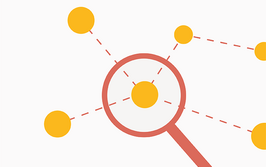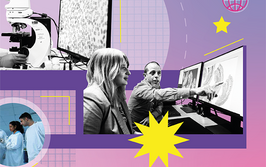Autopsy on Autopilot
When it comes to investigating death, we must first ask ourselves, “What is the question?”
Invasive autopsy rates vary markedly internationally, from as little as 1 percent of deaths in Japan to as much as 20 percent in England and Wales, which suggests variable medico-legal requirements to death investigation in different countries. Clearly, not all countries places the same value on the traditional autopsy.
But even in places where reliance on invasive autopsy is high, its position as the gold standard for internal examination of the body is now being challenged. Over the last three decades, we have seen developing evidence for (and increasing acceptance and adoption of) post-mortem computed tomography (PMCT) as an adjunct to – or even a replacement for – invasive autopsy.
Those who favor the traditional technique may point out that there are weaknesses in using PMCT as opposed to autopsy. Diagnostic weaknesses of PMCT include its inability of PMCT to confidently diagnose visceral injury, bruising, sepsis, pulmonary thromboembolism and more. But focusing on these alone is an oversimplification – and it misses two important points.
First, PMCT also has distinct strengths – for example, as a rapid screen for trauma, pneumothorax and hemorrhage. The combination of PMCT and invasive autopsy identifies more significant pathologies than either on its own, and should therefore be considered the gold standard for internal examination in a death investigation.
Second, death investigation is a process with multiple stages and diagnostic tools – and their use and order depends on context. For example, audit using autopsy clearly shows that many death certificates completed by doctors record an incorrect cause of death – yet, for most deaths, this process is considered adequate.
We therefore suggest that, before deciding which investigative approach is best, you ask yourself: “What is the question?”
The classic questions asked in death investigation can be simplified to “where,” “who,” “how,” and “when.” In many cases, particularly traumatic deaths, the answers are known with certainty at the outset, and yet the investigation continues. Why? Often, it’s to satisfy criminal court proceedings in which the investigators are fearful of subsequent criticism should they miss anything. We must resist this! In clinical medicine, this “defensive practice” consumes increasing amounts of healthcare resources without providing benefit, and can even result in overdiagnosis and patient harm. And it’s unnecessary from a legal standpoint, too; in the UK, homicide has been investigated without autopsy, using external examination only, with no adverse effect on the judicial process (despite guidelines suggesting that both autopsy and histology are required).
The defensive approach is even more mystifying when the level of evidence required for the coroner is a “balance of probabilities.” The investigation in this scenario often focuses on how the deceased died and may simply fulfill the statutory obligation to provide a medical cause of death. Different attitudes to the level of evidence required for this task explain the radically different autopsy rates in Scotland (6 percent) as compared with England and Wales (20 percent).
Research has shown that a PMCT scan with targeted coronary angiography can provide the cause of death in up to 92 percent of cases of adult sudden death of natural causes (1). We also find that, for most cases of traumatic death, there is little to be gained from autopsy after a PMCT scan, particularly if enhanced with whole-body or multiphase angiography.
We are not proposing PMCT as a replacement for autopsy. Rather, we propose that PMCT become the first-line test if internal examination is required – but after consideration of the identity, scene, history, external examination and need for toxicology. PMCT may be augmented by angiography, pulmonary ventilation, and PMCT-guided histology and microbiology samples. Only if this investigation does not provide the cause of death, or answer other necessary medico-legal questions, should the investigation proceed to either a targeted or a whole-body autopsy.
In my view, this more logical approach is hampered by the current “autopsy-centric” attitude to death investigation, which neither respects the remains of the deceased nor their beliefs. PMCT is now proven to answer the questions asked in many post-mortem investigations (1)(2). A small number of county councils in England and Wales have recognized the benefits of PMCT and are now developing services.
Currently, the likelihood that a death will require investigation depends on what side of the Scottish border you live on. Whether you can avoid a traditional autopsy through the use of PMCT also depends on where you live – as well as your ability to pay. Nonetheless, I believe that in the future, commentators will look back on our society – which chooses to do perform autopsies on thousands of adults and children, despite the availability of a non- or minimally invasive alternative – and say, “shame on you.”
- GN Rutty et al., “Diagnostic accuracy of post-mortem CT with targeted coronary angiography versus autopsy for coroner-requested post-mortem investigations: a prospective, masked, comparison study”, Lancet, [Epub ahead of print] (2017). PMID: 28551075.
- IS Roberts et al., “Post-mortem imaging as an alternative to autopsy in the diagnosis of adult deaths: a validation study”, Lancet, 379, 136–142 (2012). PMID: 22112684.
Guy Rutty is Chief Forensic Pathologist at East Midlands Forensic Pathology Unit, and Bruno Morgan is Professor of Cancer Imaging and Radiology at the University of Leicester, UK




















